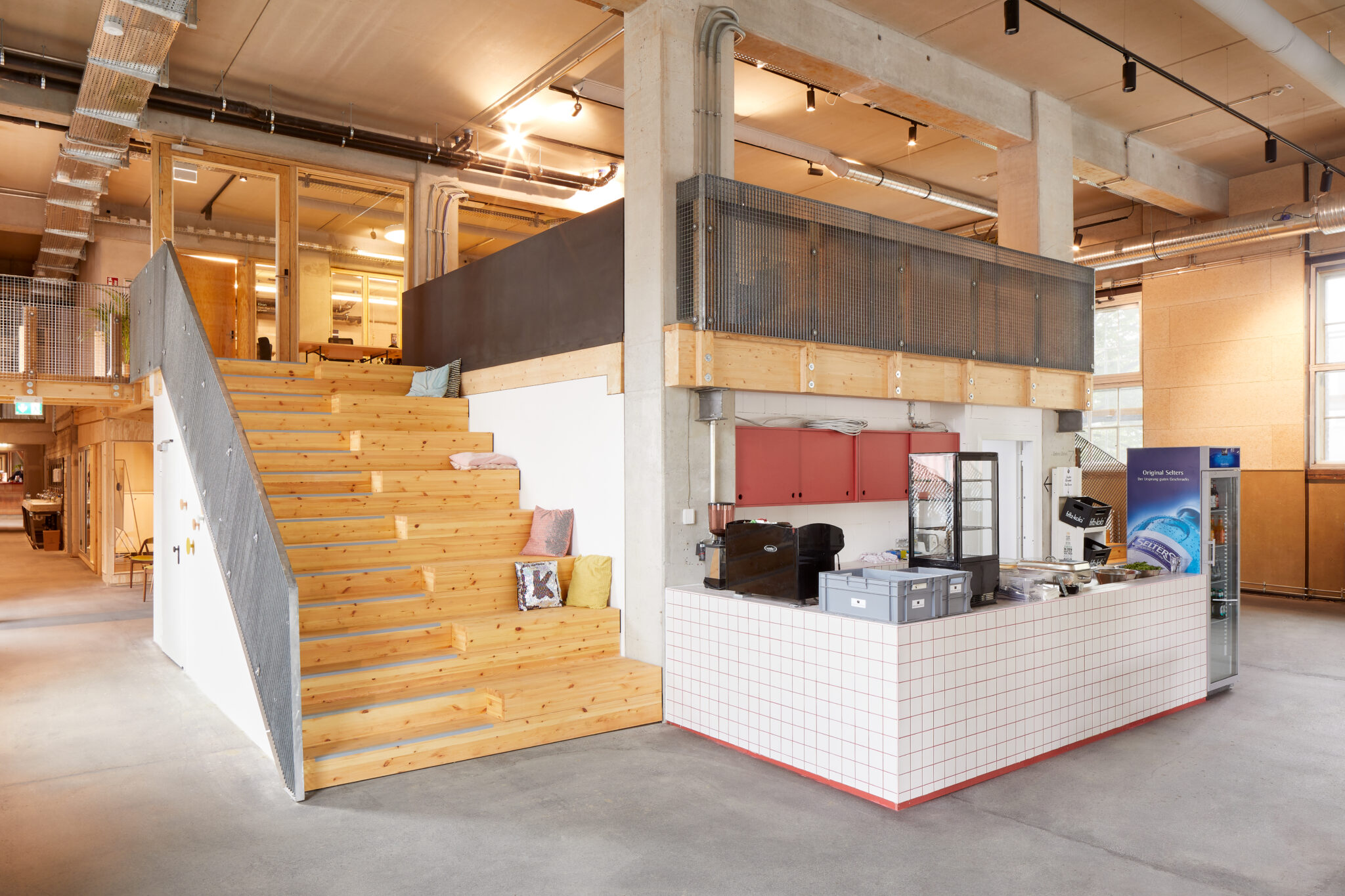From Housing Dystopias to Housing Utopias
Millions of European citizens struggle to afford housing bills, but there is hope on the horizon.
Housing and mental wellbeing are intertwined. Imagine that over 40% of your income had to go towards covering your rent and bills, which is the minimum threshold used to designate someone as being overburdened with housing costs. Well, in a country like Greece, this is particularly common. As of 2022, about 27% of urban Greeks had to cope with overburden housing cost rates, as did 24% of their rural counterparts. And yet, evictions and first property auctions are two of the government’s discriminatory methods of dealing with unpaid rents.
Greek tenants are being affected by overtourism, Airbnb, Golden Visa schemes, and inflation, causing anxiety in the most vulnerable households, according to governance and public policy expert Vasilis Delis. In an interview with local media outlet News 24/7, he said that rental prices are also leaping skyward in non-touristic cities like Thessaloniki and Athens thanks to an influx of jobseekers. Even when Airbnb apartments return to the rental market, they do so at inflated prices, he adds.
For many young people, this housing crisis is coinciding with a period of high unemployment.
“I think that if people organize and make demands, this will bring about change faster,” he says, before providing an example of the eye-watering housing prices in his local Athens neighborhood: “The most tragic I have seen, as I live in and I know this region, was a 20m2 [studio] in Neos Kosmos for 1,200 euros. [The neighborhood] has become the Athenian Manhattan!”
For many young people, this housing crisis is coinciding with a period of high unemployment. According to a recent study, young people are acutely affected by the housing crisis and as a result are having to live at the family home for longer. From 2010 to 2019, the number of people aged between 25-34 living with their families increased notably in Belgium, Ireland, Spain, Italy, Croatia, Greece, and Cyprus. This spring, thousands of Europeans took part in demonstrations calling for affordable and decent housing with movements such as Housing Action Days. However, a recent survey conducted by the Climate Reality Barometer suggested that Generation Z cares more about inflation than climate.

Reducing emissions, increasing social impact
Michael Shank, the director of engagement at the Carbon Neutral Cities Alliance, wrote for POLITICO “If we’re going to build a political mandate for climate action, we need to prove that the process of decarbonizing buildings and cities is going to improve people’s lives — especially those from low income and marginalized communities, as well as those primarily concerned with the cost of living.”
The building sector is a considerable contributor to greenhouse gas emissions, representing 35% of energy related emissions in the EU. Additionally, emissions from manufacturing of construction products, material extraction and construction, and renovation of buildings are estimated to account for around 5-12% of the total GHG emissions. However, up to 80% of those emissions could be eliminated with better material efficiency. Yet there is work to be done – an estimated 75% of EU buildings are energy inefficient. A related drawback to energy inefficiency has been the fact that 41 million Europeans could not keep their homes adequately warm in 2022.
To ensure that buildings serve citizens and align with the European Green Deal, the EU building sector needs to achieve emission reductions of at least 60% for the next six years. When considering emission reductions, it is crucial to highlight the social benefits of decarbonizing construction, such as the creation of millions of new jobs.
Another advantage of energy efficient homes is cost saving and tenants’ ability to cope with energy poverty. One such example is the RE-SKIN project that aims to approach holistic building renovation in existing buildings, including a Bulgarian school and a public building in Italy providing housing to vulnerable groups of people.
Another advantage of energy efficient homes is cost saving and tenants’ ability to cope with energy poverty.
“If we don’t articulate well this social angle, what we have already seen is that there is already a pushback, … some sort of resistance from those communities, from those social classes which feel left behind,” Zsolt Toth, the Team leader at BPIE said at the New European Bauhaus in April. The New European Bauhaus is an interdisciplinary initiative of the European Green Deal that brings together arts, culture and sustainability in our living spaces and experiences. During the four-day festival, multiple local initiatives embracing a different way of living were presented.
Reimagining housing affordability
One of those was Barcelona’s La Borda, a cooperative providing affordable and stable housing to its residents. It is mostly constructed of wood with fire protected facades. With 28 housing and 20 solar panels on its roof top, La Borda fulfills the objectives of the New European Bauhaus by combining social, artistic, and environmental aspects. For instance, the building embraces passive bioclimatic solutions, such as a greenhouse covered patio, which has CO2, smoke and wind sensors to regulate air ventilation. Tenants are encouraged to embrace plant-based cooking, take care of the rooftop garden and share objects.

La Borda is the first building in Barcelona that doesn’t have underground car parking following a process that took almost two years until the obsolete piece of building legislation was changed. Instead, there is a bicycle parking area on the ground floor. Another important angle that needs to be considered in energy efficient buildings is teaching tenants how to adopt sustainable behaviors. “If they don’t know how to use properly their house that doesn’t need heating or AC…it will be performing in a bad way,” the architect Carles Baiges Camprubí highlighted at the New European Bauhaus.
From an old brewery to a multifunctional space
In Berlin, an old Kindl brewery has been transformed into a livable co-working space. At a glance, the building might appear unfinished with its unpainted walls and exposed timber and hemp. But these features serve a purpose as the materials can be reused more easily in the future. The CRCLR House has been constructed based on circularity principles. About 80% of the materials were produced sustainably, recycled, or upcycled. For instance, timber was retrieved from an art installation and sinks were reclaimed from a camping site.

On top of these offices, architects constructed affordable apartments. The new floors have mostly been built with timber and insulated with straw. To enable potential future deconstruction, all building materials screwed or wedged. Considering that over a third of waste generated from construction and renovation ends up in Europe’s landfills, the CRCLR House is a great example of a different future. It is also a significant signal for renovating empty buildings in the EU. However, this can only be done if renovation is affordable.
The EPBD and ideas to step forward
A recent milestone in the EU policy was the adoption of the Energy Performance of Buildings Directive by the EU countries on 12 April 2024. This law addresses the critical need to phase-out fossil fuels and prioritizes funding for vulnerable households. EPBD will also facilitate access to information and cooperative models. Another crucial target is to entail assessing and limiting all new buildings’ emissions as of 2030.
Yet, Danielle Densley Tingley, expert in circular economy at the University of Sheffield stresses that “the most sustainable building is the one you don’t build.” Zsolt shares the same view highlighting: “We need to increasingly look at reducing and avoiding as much as possible new construction and making use of our existing fully built buildings stock as much as possible.”
EPBD unfortunately creates some extent of flexibility for each country to decide on the implementation of these targets. This could make EU monitoring quite difficult. It is therefore critical that EU citizens hold national lawmakers accountable to ensure that EPBD prioritises the welfare of vulnerable people and guarantees adequate financial and informational support for homeowners.
Housing has to be an election issue. We need to see a European Fund to provide housing in the next mandate.
Ciarán Cuffe from the Greens/European Free Alliance to Housing Europe
Housing Europe, the European Federation of Public, Cooperative & Social Housing, recently released a European Manifesto to lead the way out of the housing crisis. One of the policies suggested is the prevention of short-term rental platforms, which affect the affordability and availability of housing in Europe. Another one is to satisfy decent affordable housing to tackle increasing homelessness. The manifesto also outlines that supporting public, social, community-led, and cooperative housing should be the basis of the national housing systems.
“Housing has to be an election issue. We need to see a European Fund to provide housing in the next mandate, ” says Ciarán Cuffe from the Greens/European Free Alliance to Housing Europe, who is also the rapporteur of the EPBD.
European citizens have the right to choose political parties that consider addressing the multiple challenges of the housing sector. It might sound utopic, yet sustainable spaces that involve arts, and tackle social and environmental issues can exist. The New European Bauhaus showcases multiple such projects every year, and it’s about taking the right decisions to make affordable housing flourish in our neighborhoods.
